Climate Change Response
- Sustainability
- Environmental
- Climate Change Response
- Climate Change Response Strategy
and Mid- to Long-term Goals - Energy Use
- Climate Change Risk Management
- Climate Change Indicator Management
- Climate Action
- Biodiversity Activities
Climate Change Response Strategy and Mid- to Long-term Goals
Hyosung Heavy Industries has set a goal to reduce greenhouse gas (GHG) emissions by 14.5% by 2030, using 2018 as the base year. This target aligns with the reduction goals for the industrial sector outlined in South Korea’s Nationally Determined Contribution (NDC) under the Paris Agreement. The company is actively participating in the Emissions Trading System (ETS) and calculates its GHG emissions annually, with third-party verification. Notably, emissions from construction sites—initially omitted from the 2018 and 2019 emissions reports—have been voluntarily calculated and verified by a third party.
(Construction site emissions have been included in the ETS scope since 2020.)
Execution strategy
- GHG reduction through external reduction projects such as SDM* in line with the Paris Agreement
- Reduction of GHG emissions through energy conservation measures at business sites and expansion of the use of new and renewable energies
- Efficient GHG management facilitated by the in-house carbon asset management system and product carbon footprint calculation system
- Establishment of a climate change risk and opportunity identification process for risk hedge and opportunity identification
- Sustainable Development Mechanism under the Paris Agreement
GHG Emissions
Reduction target Emissions
63,466tons
Under review due to exceeding the target
- Direct and indirect GHG emissions
- Unit : tCO2eq
- GHG intensity (total emissions/sales)
- Unit: 1 ton of CO2/KRW 100 million
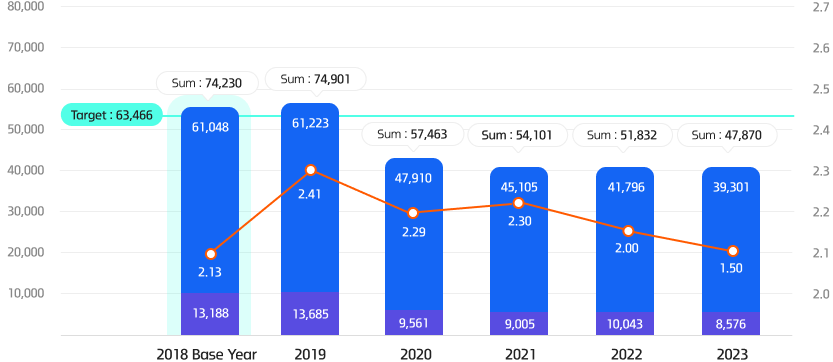
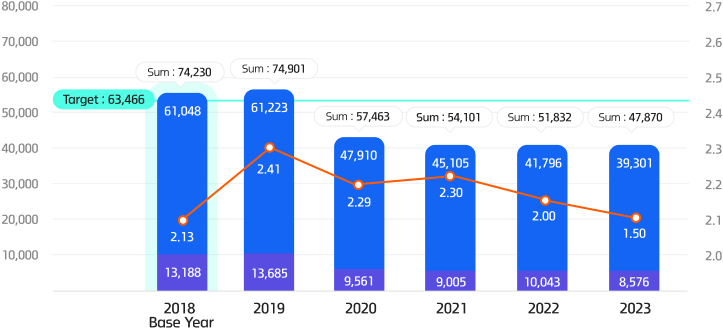
Direct GHG emissions
Indirect GHG emissions
GHG intensity
Energy Use

To conserve energy, Hyosung Heavy Industries developed a customs clearance management system for air cooling and heating systems. The system helps us control wasted energy immediately to conserve energy. In addition, we reduce power consumption by implementing a high-efficiency inverter operation method that improves the operational efficiency of facilities.
Climate Change Risk Management
-
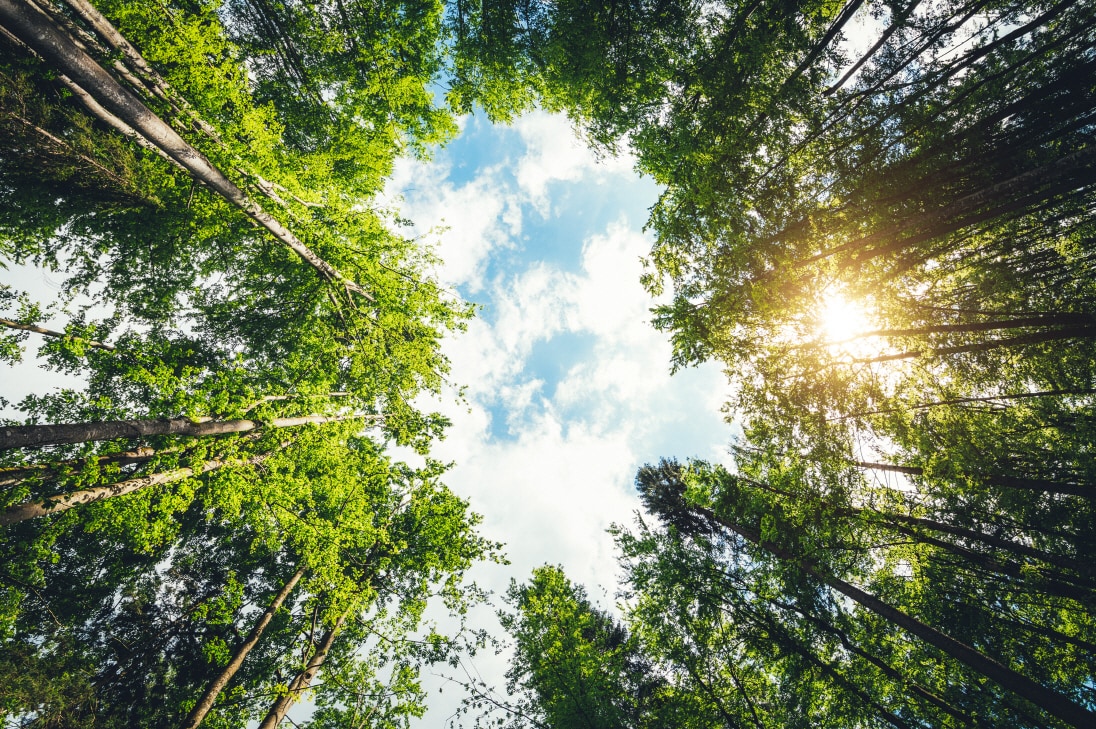
Hyosung Heavy Industries has established a risk management process that can identify and systematically respond to climate-related risks and opportunities. We identify and evaluate risks by analyzing stakeholder demands and the internal and external business environment. Climate change risk factors include transition risk due to market and technological changes resulting from the transition to a low-carbon economy, and short- and long-term physical risks due to climate change, such as typhoons, droughts, and floods.
-
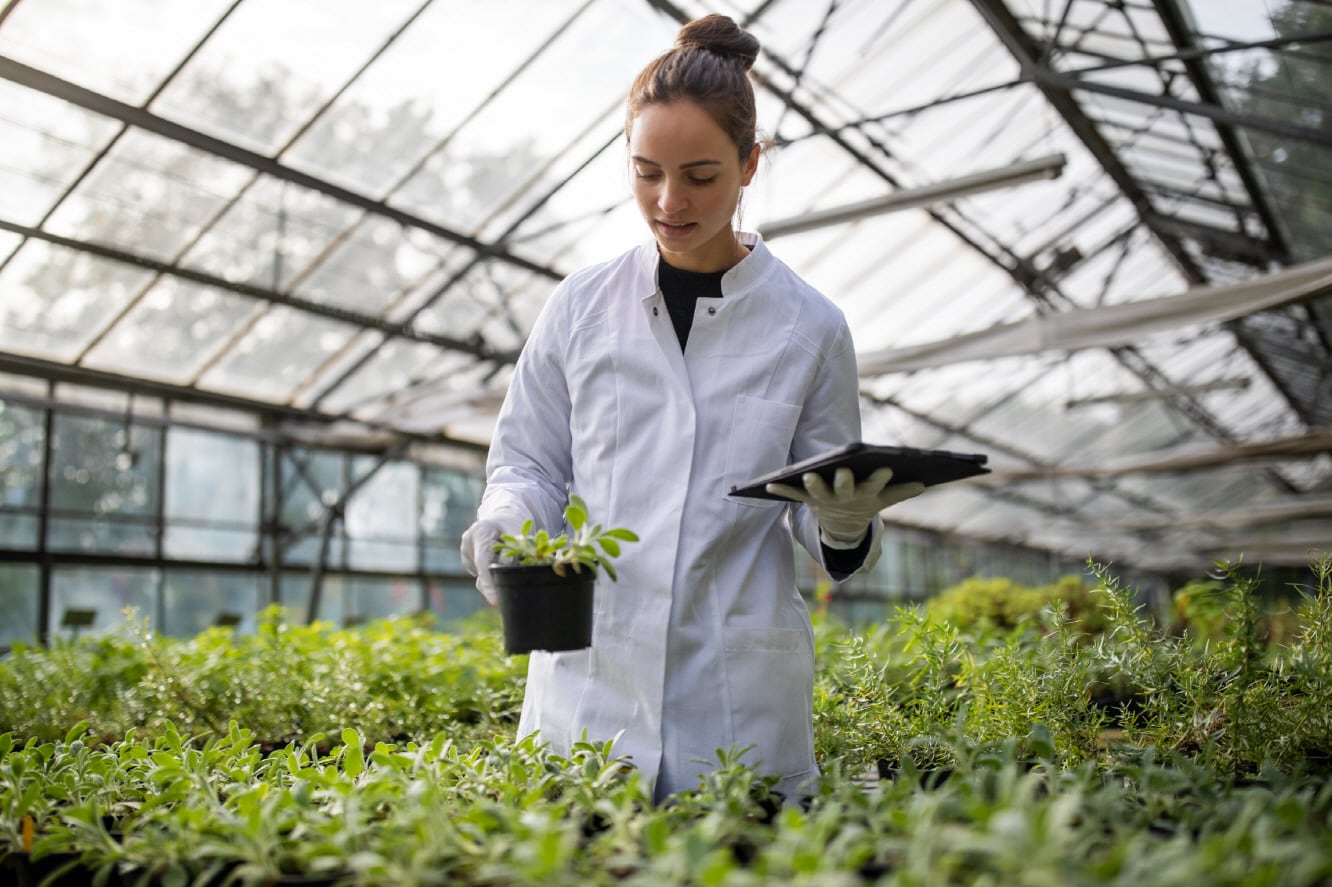
Each year, Hyosung Heavy Industries updates its risk management status in order to identify new risks and enhance the concreteness of its countermeasures. Significant risks are reported to the ESG Management Promotion Committee and assessed annually to determine if countermeasure objectives have been met. In addition, we have implemented internal carbon pricing1) to manage climate change risks and identify opportunities by incorporating them into strategic decision-making such as business direction and investment. We also use the carbon price according to GHG emissions for economic feasibility analysis when accounting for the cost of oversupply and deficit of emission allowances according to the emissions trading system, establishing workplace energy use plans, and making facility investments. This is done by calculating carbon emissions and distributing economic evaluation guidelines and GHG emission calculators throughout the organization.
1) Internal carbon price : A company voluntarily sets a price for carbon emissions to internalize the economic cost of GHG emissions.
Risk Management Process
- Understanding the internal and external situation Investigation of internal and external stakeholder demands
- Risk identification SWOT, 3C analysis, etc.
- Risk assessment Likelihood, severity
- Risk measures Establishment and implementation of risk reduction measures
- Risk identification and change management Risk change management after implementation of measures
- Report to BoD & top management Major risk reporting
Key Risks And Opportunities Related To Climate Change
| Classification | Description | Details |
|---|---|---|
| Risk | Emissions Trading Scheme | Increase in the cost of purchasing credits due to lack of carbon credits |
| Demand for acquisition of eco-friendly product certifications | Participation restrictions based on environmental certification at the time of dis-qualification on projects | |
| Changes in consumer (customer) preferences | Reduction of the demand for existing products and rising R&D costs | |
| Physical risks such as heavy rainfall and typhoons | Increase in maintenance costs to prevent physical risks | |
| Opportunity | Expansion of markets for low-carbon products and services | Increase in sales due to expanding market for energy-efficient products |
| Creation of new markets associated with energy conservation | Creation of new energy conservation-related markets (e.g. ESS, HVDC) | |
| Emissions Trading Scheme | Surplus revenue from allowances |
Climate Change Indicator Management

-
Operation Of Carbon Asset Management System
Since 2011, Hyosung Heavy Industries has implemented and operated an IT-based carbon asset management system to effectively monitor GHG emissions at each business site. Using the system, we establish a GHG inventory at each business site and ensure a systematic management by monitoring emissions by facility and activity data in accordance with the Emissions Calculation Plan. In addition, we implemented a system for calculating the carbon footprint of products in June 2022 so as to measure and manage carbon emissions throughout the product life cycle.
-
Carbon Emissions Management
Hyosung Heavy Industries has set a quantitative goal to reduce GHG emissions by 14.5% by 2030 compared to 2018. To achieve this Green Management Vision 2030, we have predicted production yield, energy consumption, and GHG emissions by business site for 2030 based on the business plan and have established an annual reduction business plan. For reductions that are difficult to achieve through our reduction projects alone, mid- to long-term investments are required, such as the purchase of domestic third-party PPAs and reduction certificates produced with new and renewable energies, and installation of power generation facilities powered by new and renewable energy sources. We calculate the cost and determine the financial impact of these climate change risks based on internal carbon pricing.
-
Internal Carbon Pricing
In 2021, Hyosung Heavy Industries introduced internal carbon pricing in order to identify risks and opportunities associated with climate change as a result of the transition to a low-carbon economy. We use this information for company-wide business direction and investment decisions. Internal carbon pricing entails the company voluntarily internalizing the economic cost of GHG emissions by establishing a price for carbon emitted from management and business activities. Accordingly, Hyosung Heavy Industries converts both the amount of carbon emitted and the amount of carbon emissions cut resulting from energy savings into a monetary value, incorporates it into economic evaluation, and uses it for energy facility replacement, new business expansion, and business investment. We will continue to do all we can to reduce GHG emissions as part of our efforts to achieve the Vision 2030 objective.
-
Management Of Climate Change-Related Employee Key Performance Indicators (KPIs) and Incentives
As performance indicators, Hyosung Heavy Industries establishes energy reduction goals for production executives or plant managers relating to climate change, and GHG reduction goals for members of the Green Management Team. Their performances are evaluated so they are awarded incentives based on the evaluation outcomes. Moreover, in order to establish ESG management as a part of the corporate culture, the ESG Management Promotion Committee and the Board of Directors decided in 2021 to establish ESG management KPIs for employees and evaluate their performance. The initiative has been implemented since 2022. Accordingly, we have setup climate change indicators to evaluate all teams associated with energy conservation and greenhouse gas reduction, such as the ESG Management Team, Green Management Team, Production Team, and Power Generation Team, as well as relevant executives (including C-level).
Climate Action

- GHG Reduction Activities
- Hyosung Heavy Industries constantly strives to reduce GHG emissions at its business sites in response to the government's carbon neutrality and green growth policies and to mitigate the greenhouse effect. We continue to promote the use of eco-friendly fuel, the replacement of high-efficiency equipment, the enhancement of processes, and the introduction of eco-friendly equipment.
- Building Smart Factories
- Hyosung Heavy Industries has set the establishment of smart factories as one of the Group's management policies and is continually improving its systems. In smart factories, all production-related resources are connected to the workplace in real-time, and the collected data is analyzed to build an optimized production environment. Enabling optimal operating conditions, smart factories not only contribute to increasing production yield but also reducing GHG emissions through lower energy consumption.
- Eco-Friendly Product and Technology Development
- Hyosung Heavy Industries focuses its efforts on the research and development of eco-friendly technologies and products, thereby securing future growth engines and achieving sustainable growth. We will take the lead in addressing climate change and establishing an eco-friendly business ecosystem through substantial investments in R&D, such as bolstering business capabilities for efficient energy use, setting up an eco-friendly hydrogen business, and developing resource recycling technology
- Learn more about Eco-friendly Technology Development
- Support for Energy Conservation and GHG Reduction for Suppliers
- Since signing business agreements for shared growth with large enterprises and SMEs with the Korea Energy Agency, Hyosung Heavy Industries has been offering partners energy diagnosis and consulting services. Through a diagnosis of process and workplace environments, energy managers of partners can receive information on factors such as energy saving and GHG emission reduction factors, analysis of problems and economic feasibility, and improvement themes. We provide partners with support for energy-saving facilities where necessary.

Biodiversity Activities

As the ecosystem continues to be destroyed by climate change, the obligation to preserve biodiversity is emerging. Hyosung Heavy Industries supports and participates in efforts to preserve and promote biodiversity in order to nurture a thriving ecosystem for coming generations.
| Activity | Details | Period |
|---|---|---|
| Online training on climate change and biodiversity | Raising the awareness of biodiversity among employees | Every July |
| Winter Migratory Bird Feeding and Release Support Project | Endangered species protection | Annually |
| Plogging* alongside the Hangang River near Mapo-gu and Sebitseom | Environmental cleanup activity at Hangang Park | Annually |
| Endangered Insect Restoration Initiatives | Endangered insect species recovery | From 2025 to 2027 |
| One Company, One River initiative | Waste Collection Activities near Business Sites | Ongoing |
| Wetland conservation activities | Purification of wetlands and creation of rest areas | 2023 |
| Changwon Biodiversity Conservation through Public-Private-Academic Partnership | Removal of invasive species near business sites, amphibian roadkill prevention activities, etc. |
From 2025 |
- Plogging: A portmanteau of the Swedish verb "plocka upp," which means "to pick up," and the English word "jogging." Plogging is the act of picking up trash while jogging or walking.
- Seagrass: Seagrass: Seagrass, a type of marine plant that grows underwater, is one of the 'blue carbon' sources, which are carbon sinks in marine ecosystems. It is designated as a legally protected species under the 'Marine Ecosystem Conservation Act' and is classified as a species of 'Concern' by the IUCN (International Union for Conservation of Nature).
-

Biodiversity Training Targeting All Employees
All employees received training on the impact of climate change on biodiversity and the connection to business operations. Through biodiversity training, Hyosung Heavy Industries will continue to attempt to increase employee awareness of biodiversity.
-
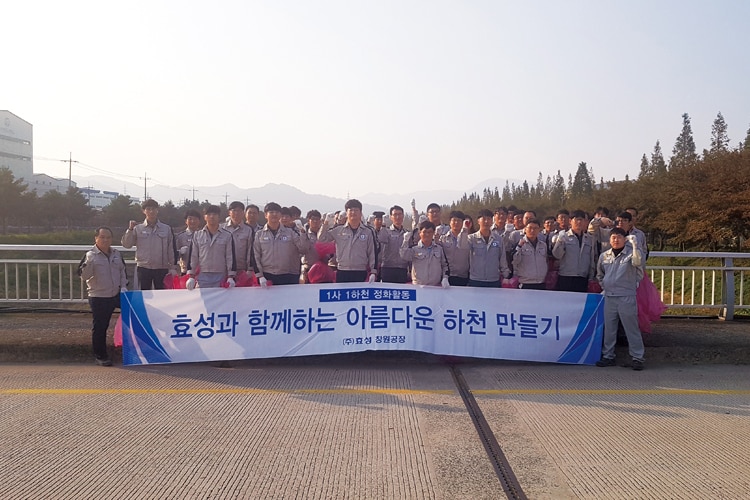
Each Business Site Entitled To Clean Up A River
Through the "one-company-one-river" initiative, Hyosung Heavy Industries continues to clean up the Namcheon Stream next to the Changwon Plant as part of our efforts to preserve the stream's ecosystem.
-
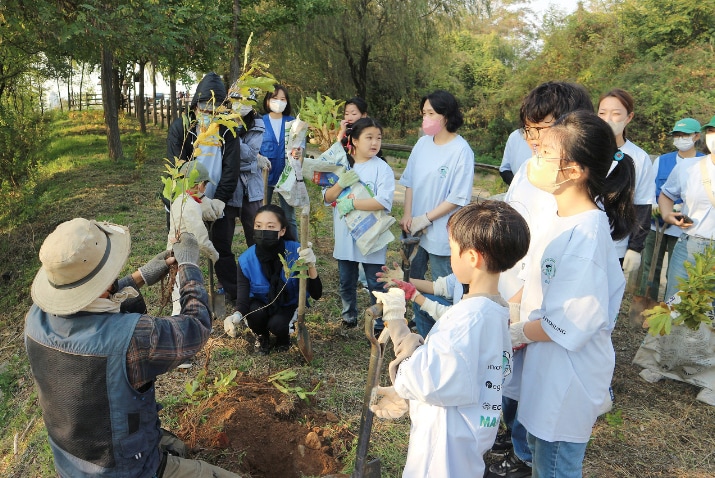
Plogging And Tree Planting With Employees And Citizens
Hyosung hosted the "Sevit ESG Color Festival" on Sebitseom. By planning "Sevit RE:GEN Plogging," a campaign of jogging alongside the Hangang River while cleaning, we carried out environmental cleanup activities together with local residents. In addition, the "Hyosung Tree Planting" event, in which citizens, Hyosung employees, and their families participate, was created in honor of Hyosung's 50th anniversary in 2016. The event takes place each year at "Hyosung Forest of Sharing" located in Noeul Park, Mapo-gu. More than 3,000 seedlings of approximately 40 species have been planted to date. In order to preserve the ecology of Noeul Park and support management, we are involved in annual environmental cleanup activities such as funding operating expenses.
-
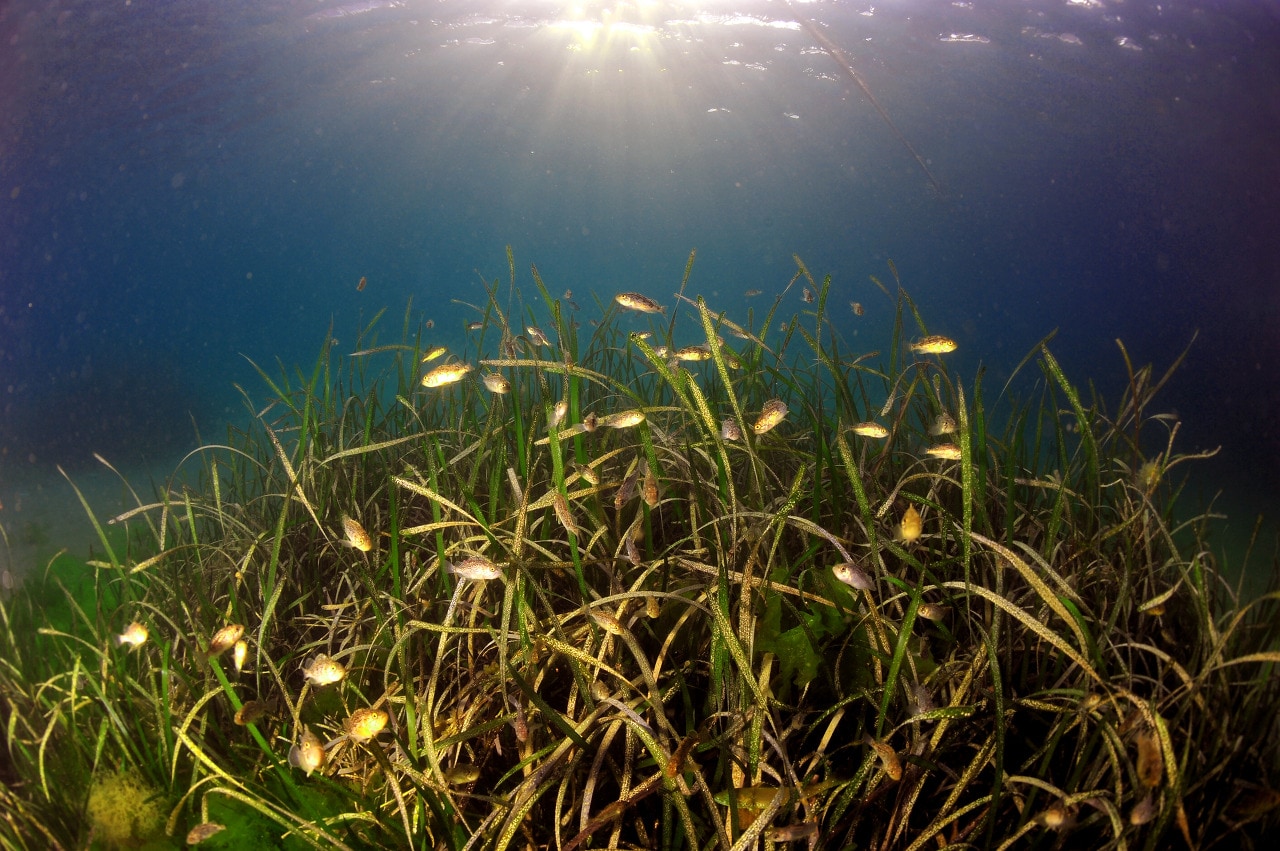
Seagrass Forest Management Project
Together with the Korea Fisheries Resources Agency, Hyosung Heavy Industries engages in a management project for seagrass(Zostera Marina) grown in Dadae-ri and Dapo-ri of Geoje-si, Gyeongsangnam-do. Seagrasses are species designated as endangered marine plants by the Conservation and Management of Marine Ecosystems Act. They play a vital role in the marine ecosystem by providing food, habitat, and spawning grounds, and are one of the blue carbon whose ability to absorb carbon has also been certified internationally. Hyosung Heavy Industries conducts activities to improve the marine environment, including monitoring the state of business sites subject to management of the seagrass forest created by the Korea Fisheries Resources Agency, monitoring the habitat, planting supplementary seagrasses, and retrieving abandoned fishing gear. When a seagrass forest is established, the number of benthic animals, the number of species present, and the species diversity index increase 2.5-fold, 1.5-fold, and 1.2-fold, respectively, ensuring a healthy marine ecosystem. Hyosung Heavy Industries intends to expand the Seagrass Forest Restoration Project in the future.




